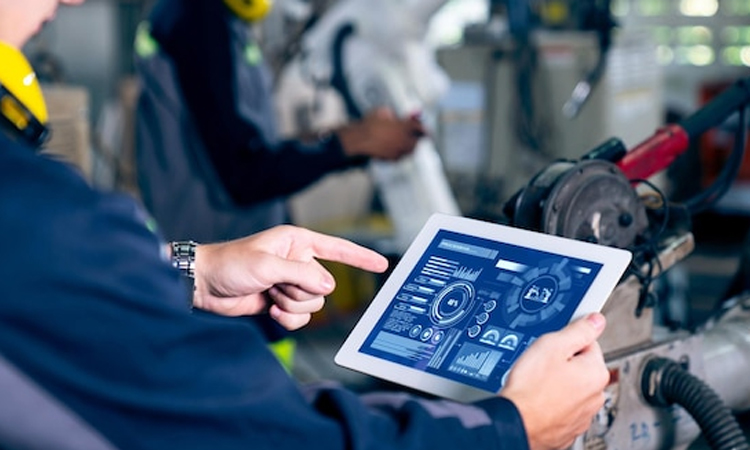The machining software industry is undergoing a transformative shift driven by technological advancements and evolving manufacturing demands. As industries seek greater precision, efficiency, and flexibility in their operations, machining software plays an increasingly pivotal role. From CAD/CAM systems to advanced simulation software, the future of machining software is marked by integration, automation, and smarter solutions. Here are the key trends shaping the future of the machining software industry.
Integration with Industry 4.0 and IoT
The rise of Industry 4.0 has paved the way for increased connectivity and smart manufacturing. Machining software is becoming more integrated with the Internet of Things (IoT), enabling real-time data exchange between machines, software, and operators. This connectivity allows for seamless communication between different systems, from design to production, resulting in a more synchronized workflow.
In the future, machining software will incorporate advanced IoT features that collect data from sensors embedded in machinery and workpieces. This data will be analyzed in real time, allowing for predictive maintenance, enhanced monitoring, and process optimization. The integration of machining software with cloud-based platforms will also facilitate remote monitoring and control, enabling manufacturers to manage their processes from anywhere in the world.
Artificial Intelligence and Machine Learning
Artificial intelligence (AI) and machine learning (ML) are revolutionizing the machining software industry. These technologies enable software to learn from historical data and optimize machining processes autonomously. For example, AI-powered software can automatically adjust cutting parameters based on real-time performance data, improving the efficiency and quality of machining operations.
AI is also being used in predictive analytics, helping manufacturers identify potential issues before they occur, thus reducing downtime and increasing productivity. Furthermore, machine learning algorithms can enhance toolpath optimization, reduce material waste, and improve part quality, making manufacturing processes more cost-effective and sustainable.
Advanced Simulation and Virtual Prototyping
Simulation software has long been a critical tool for testing machining processes and ensuring the quality of finished products. However, as machining technology advances, the need for more sophisticated simulation tools is growing. Future machining software will incorporate advanced simulations that go beyond basic toolpath verification, offering virtual prototyping and in-depth analysis of material behavior during machining.
These advanced simulations will allow manufacturers to visualize the entire machining process, from material cutting to post-processing, in a virtual environment before physical production begins. This will reduce the risk of errors, improve product quality, and streamline the design-to-manufacturing process. Moreover, virtual prototyping will enable rapid testing of new materials and machining strategies without the need for costly physical prototypes.
Cloud-Based and Collaborative Solutions
Cloud computing is a key trend that is gaining traction in the machining software industry. Cloud-based solutions provide manufacturers with the ability to access software and data from any location, promoting greater collaboration and flexibility. These solutions enable teams to work together in real time, regardless of their physical location, ensuring that design, planning, and production teams are aligned.
Cloud-based machining software also facilitates data sharing across departments, enabling a more integrated and transparent production process. Manufacturers can store vast amounts of data securely, perform detailed analytics, and share information across different systems seamlessly, resulting in improved efficiency and decision-making.
Customization and Modular Software Solutions
As manufacturers increasingly seek tailored solutions to meet their specific needs, machining software providers are moving toward more customizable and modular software systems. Rather than offering one-size-fits-all solutions, future machining software will allow users to select modules and features that are relevant to their particular machining processes, whether it’s CNC programming, toolpath generation, or quality control.
This trend towards customization will make machining software more accessible to smaller manufacturers and startups who require scalable solutions that can grow with their business. It also allows for the rapid adaptation of software to new machining technologies and materials, ensuring that manufacturers can remain competitive as their operations evolve.
Enhanced User Interfaces and Automation
The future of machining software will feature improved user interfaces (UIs) that are more intuitive, reducing the learning curve for operators and engineers. With the rise of automation and the need for efficient operations, machining software will increasingly incorporate features that allow for fully automated workflows, from design and programming to machine operation.
Voice commands, touch interfaces, and even augmented reality (AR) will become more common in machining software, making it easier for operators to interact with machines and software systems. These enhancements will enable faster decision-making, reduce errors, and improve overall operational efficiency.
The machining software industry is on the cusp of a major transformation, driven by cutting-edge technologies such as AI, IoT, cloud computing, and advanced simulation. As manufacturers demand smarter, more efficient solutions, machining software will continue to evolve to meet these needs. The future will see highly integrated, data-driven, and customizable software solutions that optimize the entire machining process, from design to production. These innovations will not only improve efficiency and reduce costs but will also help manufacturers stay competitive in an increasingly globalized market. As the industry embraces these trends, machining software will play a crucial role in shaping the future of manufacturing.
Image courtesy : Design by Freepik



